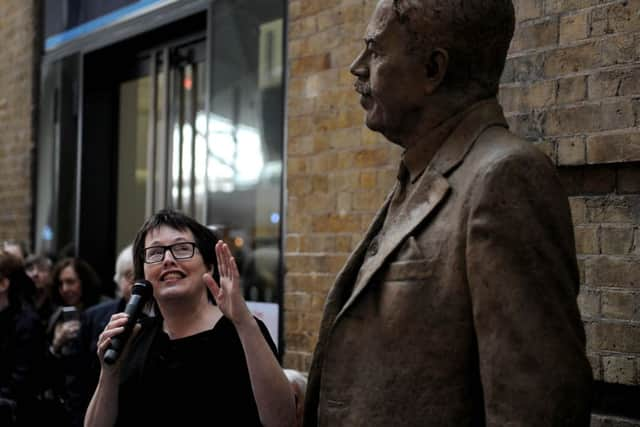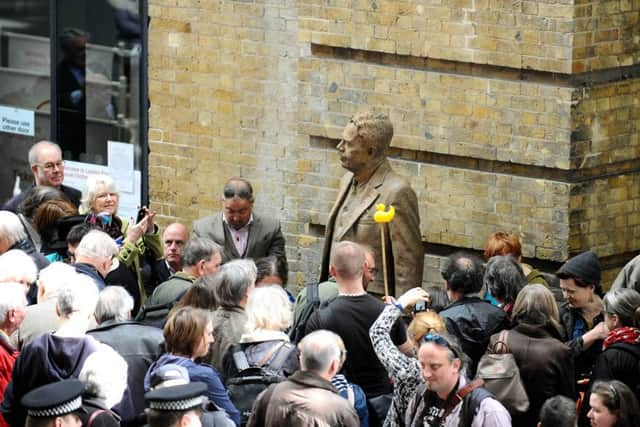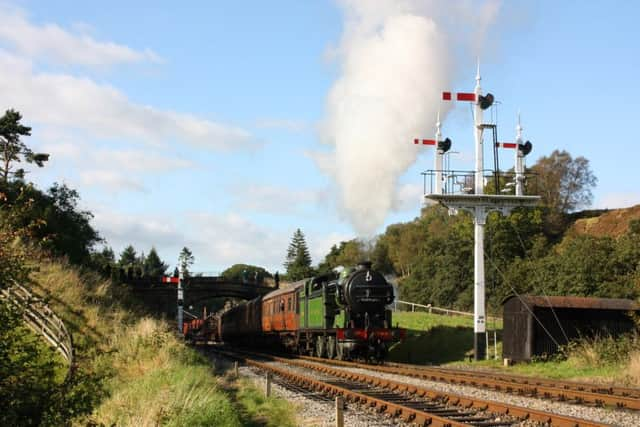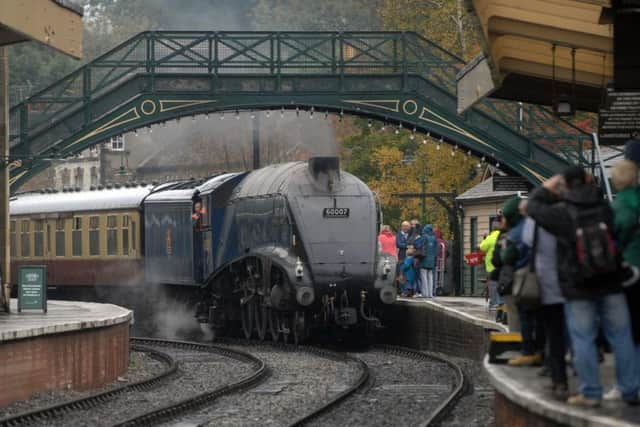Nigel Gresley statue unveiled at King's Cross - and he's out for a duck


Three-quarters of a century to the day from his death, a statue honouring the life and works of Sir Nigel Gresley was being unveiled at London’s King’s Cross Station today.
Eighteen months in the planning, and not without controversy, the bronze sculpture by Hazel Reeves has been hailed for catching “the essence” of the great locomotive designer, famed for both Flying Scotsman and the Mallard.
Advertisement
Hide AdAdvertisement
Hide AdIt was the latter locomotive, which on July 3, 1938, raced down Stoke Bank at 126mph to set a new steam locomotive world speed record that still today, that was the source of the controversy.


Original designs for the sculpture showed a duck sitting at the foot of the engineer - but it was noticeably absent today.
Sir Nigel’s family, and others, were not keen on its inclusion, and despite a 3,200-strong petition calling for the duck to be reinstated, claiming it would spark interest in the engineer’s achievements, the Gresley Society Trust, which commissioned the statue, confirmed in April last year that it will not be included.
Members of Sir Nigel’s family were at King’s Cross to see the final statue unveiled by Network Rail chairman Sir Peter Hendy today.
Advertisement
Hide AdAdvertisement
Hide AdHe said it commemorates “a man who looked relentlessly forward in his day to more powerful locomotives, faster locomotives and the world steam speed record with Mallard”.


About a fifth larger than life size, the statue now towers above the thousands of passengers that pass through the station each day. In his hand, Sir Nigel is carrying a copy of The Locomotive magazine which carries a depiction of the Mallard.
But Sir Nigel’s achievements go beyond the famous engines.
After becoming an apprentice at London and North Western Railway in 1893, his talent and hard work saw him rise rapidly through the industry.
But it was his appointment at the Great Northern Railway and a move to Doncaster in 1905 that paved his way to success.


Advertisement
Hide AdAdvertisement
Hide AdHe went on to become the chief mechanical engineer at the enlarged LNER in 1923 and was responsible for the building of Flying Scotsman that year, and the later the Mallard.
In all, he was responsible for the design and building of 2,150 locomotives and tens of thousands of carriages and wagons. His locomotives were powerful and modern, while carriages brought new standards of comfort for passengers in the Edwardian period and again in the 1920s and 1930s.
Sir Nigel Gresley was knighted in 1936, and died at home unexpectedly on April 5, 1941, at the age of 65 while still in office with the LNER.
The president of The Gresley Society, John Cameron, said the unveiling marked a “very special day”.


Advertisement
Hide AdAdvertisement
Hide Ad“The Gresley Society are delighted to see this superb statue of Sir Nigel Gresley unveiled at King’s Cross, a place that was so important to his life’s work,” he said. “I congratulate Hazel Reeves on the way she has caught the essence of this great engineer. It will stand as a memorial to his achievements for future generations, and to the quality of British engineering.”
Ms Reeves said her work shows Sir Nigel “in a moment of quizzical reflection”.
“He’s looking out towards the future,” she added.